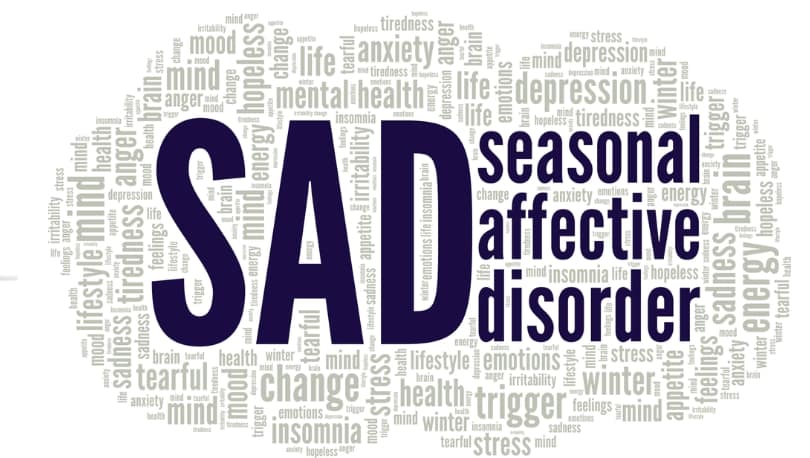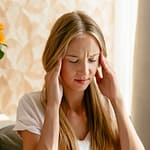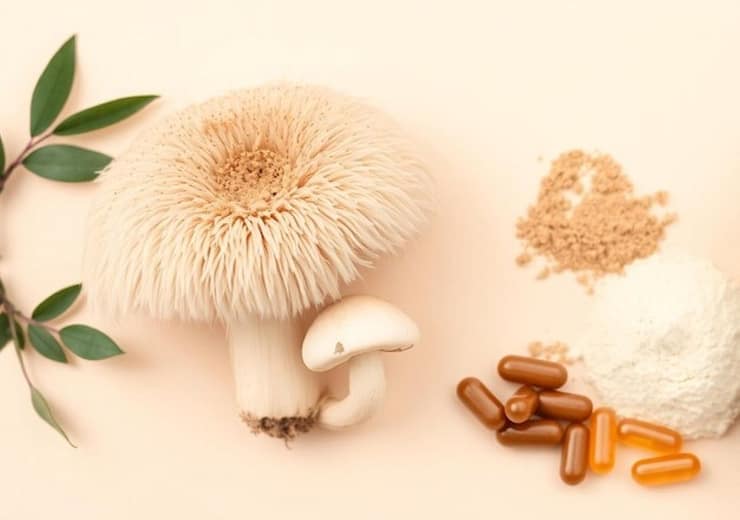How to Manage Depression and Seasonal Affective Disorder (SAD)

What is Seasonal Affective Disorder (SAD)?
Seasonal affective disorder (SAD) is a type of depression that is related to the changing seasons, especially during the fall and winter when there is less sunlight. People with SAD experience mood changes and symptoms similar to depression, but they usually feel better when spring arrives. It’s important to know that SAD is more than just feeling a little down during the winter. The symptoms can be really difficult and can make it hard for people to go about their daily lives. But the good news is that SAD can be treated.
SAD is not equally common everywhere. It’s more prevalent in places with less sunlight in the winter, like areas far from the equator. Also, younger people and women are at higher risk of experiencing SAD. Scientists think that changes in the brain due to shorter daylight hours and less sunlight in the winter might be linked to SAD. As seasons change, people’s internal body clocks can get out of sync with their daily routines, which might contribute to the symptoms of SAD.
Symptoms of Seasonal Affective Disorder (SAD)
Seasonal affective disorder (SAD) is a type of depression that is triggered by the change in seasons, usually beginning in late fall or early winter. The symptoms of seasonal affective disorder can vary, but commonly include:
- Feelings of sadness, hopelessness, or depression that persist most of the day, nearly every day
- Lack of energy and fatigue
- Overeating and carbohydrate cravings, leading to weight gain
- Oversleeping and difficulty waking up in the morning
- Loss of interest in usual activities and social withdrawal
- Difficulty focusing and concentrating
- Irritability and agitation
- Feelings of worthlessness or guilt
- Heavy feeling in the limbs (arms and legs)
- Thoughts of death or suicide
Note that the symptoms of SAD are similar to those of major depression, and experiencing these symptoms over two consecutive years during specific seasons could indicate a diagnosis of SAD.
It’s crucial for individuals experiencing these symptoms to seek professional help and get an accurate diagnosis to explore appropriate treatment options. RNR Medicine department at jaslok hospital have the top rtms depression treatment doctors in mumbai to help people with severe symptoms of SAD. If you have concerns about seasonal affective disorder or its symptoms, it’s advisable to consult with our rtms depression treatment doctors for guidance tailored to your specific situation.
What Causes Seasonal Affective Disorder (SAD)?
The exact causes of SAD are not fully understood, but several factors may play a role:
- Biological Clock Change: The body’s internal clock, or circadian rhythm, can be affected by changes in sunlight. This disruption can lead to imbalances in hormone regulation, sleep patterns, and mood.
- Brain Chemical Imbalance: Neurotransmitters like serotonin, which affect mood regulation, can be influenced by sunlight exposure. Reduced sunlight may lead to lower serotonin levels, impacting mood and contributing to depressive symptoms.
- Vitamin D Deficiency: Sunlight helps the body produce vitamin D, and lower exposure to sunlight in the winter months can result in decreased vitamin D levels. Vitamin D deficiency has been linked to mood disorders like depression.
- Melatonin Levels: Reduced sunlight can lead to overproduction of melatonin, a hormone that regulates sleep patterns and mood. Excessive melatonin production may contribute to feelings of lethargy and depression.
- Genetic Predisposition: Individuals with a family history of mood disorders, including SAD or depression, may be more susceptible to developing SAD.
- Geographic Location: Living in areas far from the equator, where daylight hours are significantly reduced during fall and winter, can increase the risk of developing SAD.
- Negative Thought Patterns: Stress and negative thoughts related to the changing seasons can also contribute to the development of SAD, though the exact relationship between these factors and SAD is not fully understood.
Seasonal Depression Treatment
Seasonal depression, requires a comprehensive approach for effective treatment. The following are the key components of treatment for seasonal depression suggested by top rtms depression treatment doctors in mumbai:
- Medication: Antidepressant medication, particularly bupropion XL, has been FDA-approved specifically to prevent major depressive episodes in people with SAD. Other traditional antidepressants and mood stabilizers may also be prescribed based on individual needs.
- Cognitive Behavioral Therapy: Psychotherapy, particularly cognitive behavioral therapy (CBT), can be beneficial for individuals with seasonal depression. CBT helps individuals identify and change negative thought patterns and behaviors, providing them with coping strategies to manage their symptoms.
- Vitamin D Supplementation: Low levels of vitamin D have been found in people with SAD. While the role of vitamin D supplementation in alleviating SAD symptoms is still under research, it may be considered as part of the treatment plan, especially in individuals with vitamin D deficiency.
Seasonal Depression Prevention
Here are some strategies that may help in preventing or managing seasonal depression:
- Spend Time Outdoors: Even on cloudy days, exposure to natural daylight can have beneficial effects. Consider going outside daily, especially during brighter times of the day. If outdoor activities are limited due to weather conditions, sitting by a sunny window can also provide some benefits.
- Light Therapy: Light therapy, using a lightbox that emits at least 10,000 lux of light, can be effective in treating SAD. Starting light therapy early in the fall, before experiencing the full effects of winter SAD, can help mitigate symptoms.
- Healthy Diet: Consuming a well-balanced diet rich in fruits, vegetables, whole grains, and lean proteins can provide essential nutrients and energy, helping to combat fatigue and maintain overall well-being.
- Regular Exercise: Engaging in physical activity for at least 30 minutes a day, five times a week, can help improve mood and alleviate symptoms of seasonal depression.
- Social Support: Staying connected with friends, family, or support groups can offer valuable emotional support during challenging times and help combat feelings of isolation.
- Consistent Schedule: Maintaining a regular sleep routine can help regulate the body’s internal clock. Aim to go to bed and wake up at consistent times each day.
- Limit Alcohol and Drugs: Avoiding substances such as alcohol and recreational drugs, which can exacerbate depressive symptoms, is important for managing seasonal depression.
- Engage in Activities You Enjoy: Setting aside time for activities you find enjoyable or fulfilling can help uplift your mood and provide a sense of purpose.
- Professional Help: If experiencing symptoms beyond “winter blues,” seek professional help from a doctor or mental health professional. They can provide guidance on effective treatment options tailored to your specific needs.
By incorporating these strategies into your daily routine and seeking support when needed, you can take proactive steps in preventing and managing seasonal depression.





